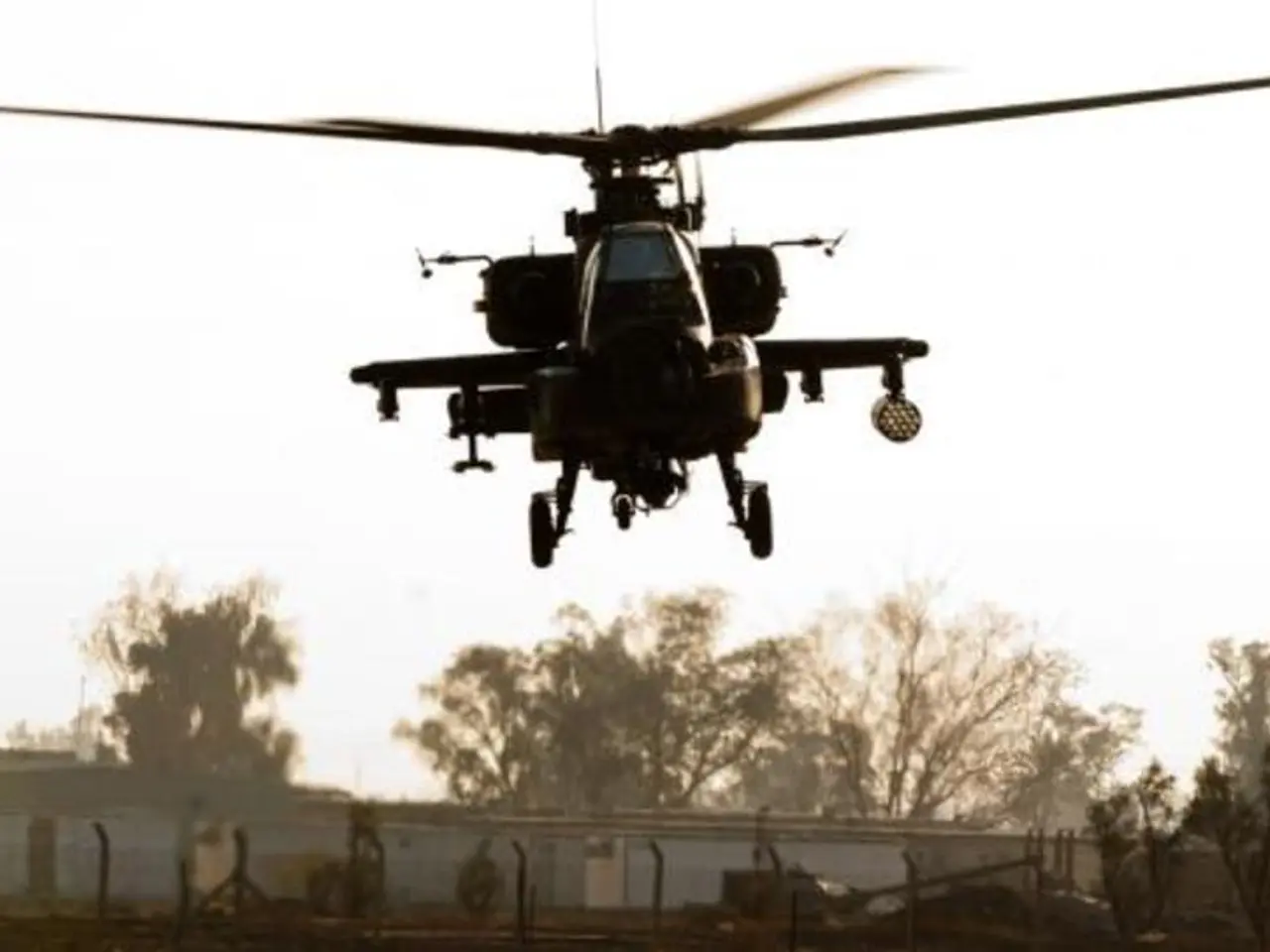Global Approaches to Unidentified Anomalous Phenomena (UAP)
Chronological Overview of Government's Approach Towards Investigating Unidentified Flying Objects and Aerial Phenomena
Governments worldwide have investigated Unidentified Anomalous Phenomena (UAP), historically known as Unidentified Flying Objects (UFOs), with varying approaches and levels of transparency. Here's a brief overview of key programs and approaches in several countries.
United States
The U.S. began formal UFO investigations in 1948 with Project Sign, initiated by the Air Force following the surge of sightings in 1947. Early hypotheses ranged from potential Soviet aircraft to extraterrestrial craft. Project Sign was followed by Project Grudge (1949) and later Project Blue Book (1952–1969), the longest-running official investigation, which compiled over 12,000 cases and concluded that most sightings had identifiable explanations, with about 6% remaining unexplained.
In 2007, the Pentagon covertly initiated the Advanced Aerospace Threat Identification Program (AATIP), in response to reports from Navy pilots encountering objects with unusual flight capabilities. AATIP invested around $22 million studying these phenomena until its declassification and disclosure in the late 2010s.
Recently, the Department of Defense established the All-domain Anomaly Resolution Office (AARO) to collect and analyze UAP reports from military and civilian sources across air, space, and maritime domains. The 2024 FY report indicates most sightings are explainable, with no confirmed extraterrestrial or foreign technology origins, emphasizing improved data collection and interagency coordination.
United Kingdom
While specific official programs are less documented, the UK’s Ministry of Defence maintained a UFO desk and commissioned investigations primarily through the 1950s to 2009, focusing on national security implications. The UK generally closed official investigations stating no evidence posed threats or confirmed UFOs.
France
France is notable for its GEIPAN, an official unit within its space agency CNES, established in 1977. GEIPAN investigates aerial phenomena using scientific methods and public reporting; it has analyzed several thousand cases, aiming for transparency and rigorous data evaluation.
Chile and Argentina
Both South American nations have established official or semi-official UFO/UAP investigation bodies. Chile's CEFAA (Committee for the Study of Anomalous Aerial Phenomena) operates under its Directorate General of Civil Aviation. Argentina has had several government inquiries, often in collaboration with their militaries, focusing on collecting witness testimony and radar data.
Japan, Peru, Spain, New Zealand, Australia
These countries largely rely on ad hoc military, aviation authorities, or scientific committees to investigate reports. Australia’s Department of Defence has occasionally released UAP documents. New Zealand has admitted to receiving reports but has no dedicated program. Japan, Peru, and Spain have historical sightings but limited systematic government investigation.
Soviet Union (and Russia)
During the Cold War, the Soviet Union conducted secret military and scientific inquiries into UFO phenomena, often classifying information. Investigations were mainly motivated by national security concerns, focusing on aerial intrusions and unidentified radar returns, but detailed official programs are less public. Since the USSR’s dissolution, Russian officials maintain media interest but the official stance remains cautious and classified.
Additional Notes
- Civil-leaning bodies such as GEIPAN publish case summaries and educational materials, while defense-leaning programs publish less frequently but may release historical compilations or statistical overviews.
- Analysts cross-reference reports with astronomical events, satellite passes, re-entries, atmospheric phenomena, and known training activities.
- During the late 1970s and 1980s, the Soviet Union operated research efforts to collect and analyze unusual observations with defense relevance.
- Japan's Ministry of Defense issued standing orders in 2020 directing Self-Defense Force units to record, analyze, and report encounters with unidentified objects affecting national security or aviation safety.
- Canada's Project Magnet, led by a senior radio engineer within Transport Canada from 1950 to 1954, explored whether geomagnetism could relate to reported phenomena.
- Most programs funnel UAP reports through centralized desks or safety offices, with intake forms capturing various details, and many soliciting corroboration from radar or other instruments.
- The approaches vary, but the center of gravity remains the same: disciplined reporting, cross-checking with environmental and traffic data, and incremental transparency through declassification.
- Peru's Air Force launched an office in 2001, later relaunched in 2013 as a public-facing department for anomalous aerial phenomena.
- The United States has the longest continuous paper trail regarding UAP investigations, with Project SIGN starting in 1948, followed by Project GRUDGE in 1949 and Project BLUE BOOK from 1952 to 1969.
- The CIA-convened Robertson Panel conducted a review in 1953, recommending standardized methods and public education to reduce misinterpretation of aerospace events.
- In 1977 and 1978, the UN General Assembly adopted decisions inviting member states to share research related to extraterrestrial life and anomalous observations with the Secretary-General.
- The University of Colorado's "Condon Committee" conducted a study from 1966 to 1968, influencing the Air Force’s decision to close Project BLUE BOOK.
- The shift in terminology from "UFO" to "UAP" is significant, as it lowers stigma, captures a wider set of anomalies, and focuses analysis on actionable safety and intelligence questions.
- France's GEPAN/SEPRA/GEIPAN UFO study program, operating since 1977, emphasizes aviation safety and scientific documentation.
- Programs typically sort outcomes into categories: identified (natural or man-made), insufficient information, and unexplained.
- Spain's Ministry of Defense declassified Air Force files from the 1960s through the 1990s and made them available to the public.
- The United Kingdom, Spain, New Zealand, Australia, Canada, and the United States have expanded public access to historic UAP files.
- The modern U.S. interagency framework prioritizes aviation-safety integration, sensor forensics, open archives and data usability, and international coordination.
- The Department of Defense created the All-domain Anomaly Resolution Office (AARO) in 2020 to synchronize intake, analysis, and reporting across services and combatant commands.
- Chile's CEFAA, established in 1997, serves as a safety-focused clearinghouse for pilot reports, radar incidents, and public submissions.
- The space economy and technology sectors are witnessing an influx of interest following the creation of the All-domain Anomaly Resolution Office (AARO) in the United States, aimed at resolving unidentified anomalous phenomena (UAP) reports across various domains.
- Environmental-science research may benefit from data collected by France's GEIPAN, which investigates aerial phenomena using scientific methods, as it could provide insights into unexplored atmospheric or geomagnetic anomalies.
- General-news outlets are reporting on the global efforts to investigate UAP, highlighting the disclosure of historical records in countries like the United States, United Kingdom, Spain, New Zealand, Australia, and Canada, fostering scientific discourse in the field of space-and-astronomy, and technology communities.




